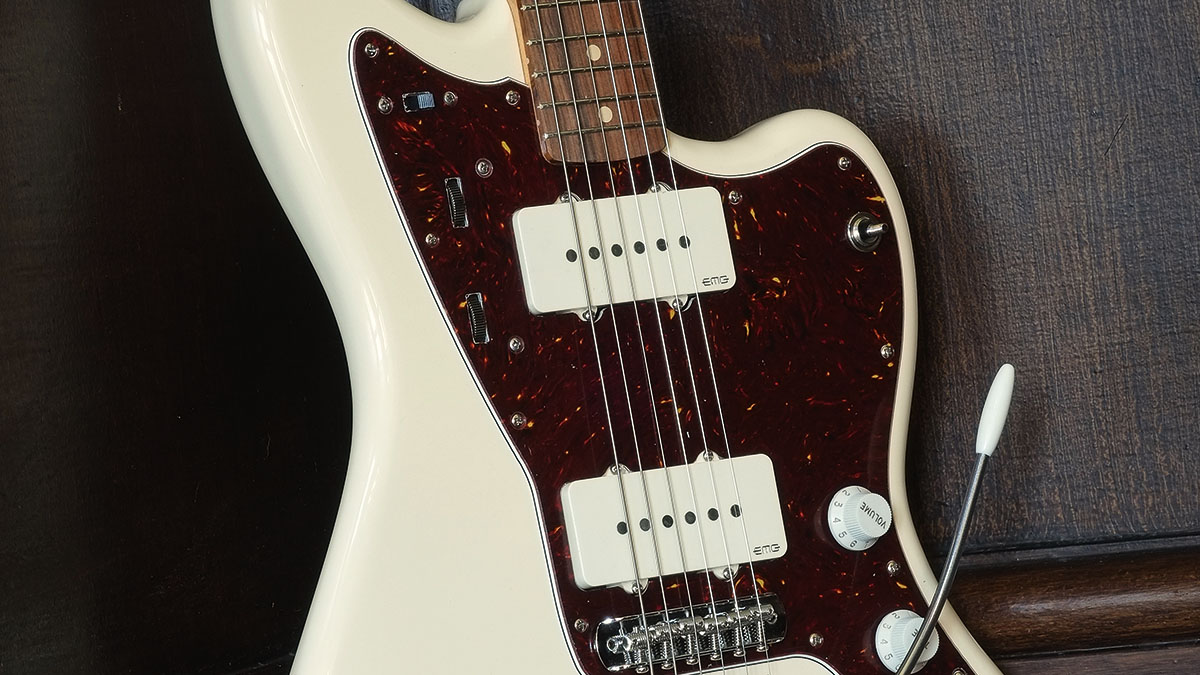Guitar World Verdict
These EMG JMaster come with pretty much vintage-style voicing but with all the usual no-noise advantages of active pickups. The tone-shaping extras on the Pickup System version (available separately) work perfectly to enhance the JMasters, subtly or quite considerably.
Pros
- +
All the advantages of active pickups.
- +
No noise and buffered output.
- +
Vintage-style voicing.
- +
SPC, EXG and clean boost enhance versatility.
Cons
- -
Changing the battery involves a lot of work.
- -
You need to find space for the battery.
- -
It’s designed for vintage-style Jazzmasters only.
You can trust Guitar World
When a press release dropped into our inbox announcing a new EMG electric guitar pickup, we weren’t expecting the brand’s first foray into the world of the offset Fender Jazzmaster.
Known for its modern active pickup designs – which the company has been making since 1976 – EMG almost seems a mismatch for the funky Jazzmaster, doesn’t it? On the other hand, with the offset guitar enjoying a huge revival, you might well ask, what took ’em so long?
There are actually two new releases. First, there’s the EMG JMaster pickup set, which as usual includes a solderless wiring kit with a master volume and master tone, and costs $229/£199 in black and $249/£219 in ivory or white. Then there’s the JMaster Pickguard System, including those pickups and also a full replacement for the Jazzmaster’s scratchplate to which the new electronics are mounted.
It retains the side-mounted ‘rhythm circuit’ controls but changes their function to include EMG’s long-running EXG Guitar Expander, which simultaneously boosts the low and high frequencies, and the SPC ‘Strat Presence Control’ (aka the fat control mid-boost) or a 12dB clean boost.
This is obviously more of an investment: the tortoiseshell ’plate with ivory JMaster pickups, for example, costs $399/£359, while the black ’plate with black pickups and the white ’plate with white pickups are both $379/£343.
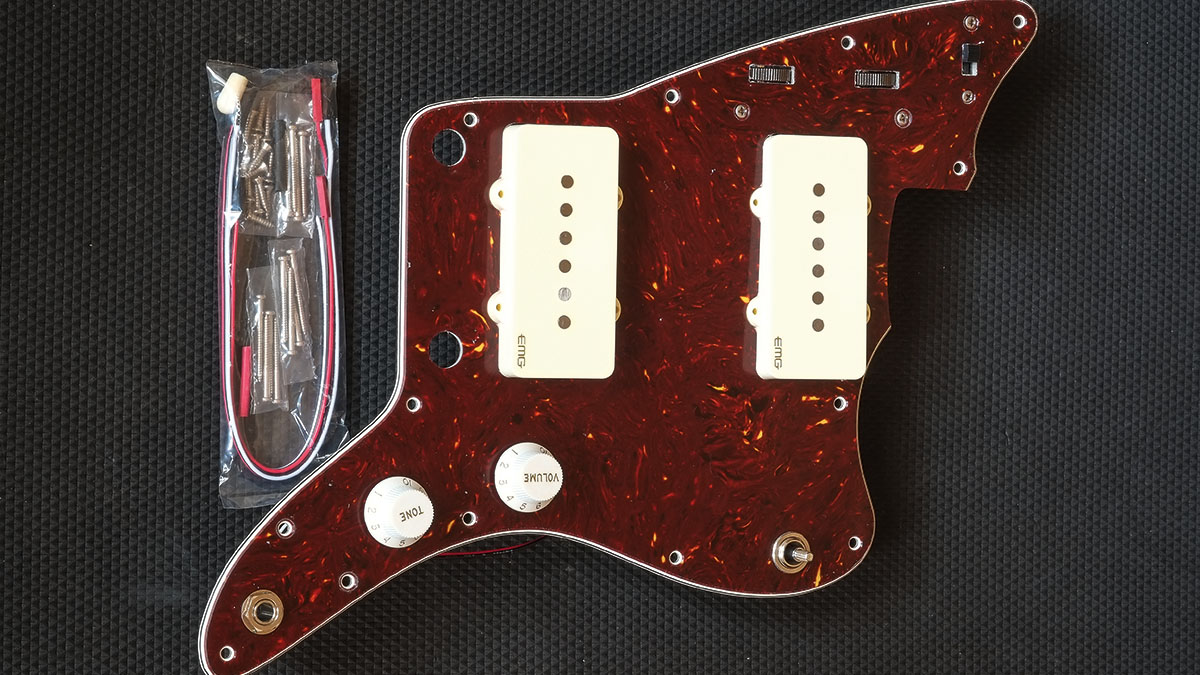
The actual JMaster pickups follow EMG’s relatively new Retro Active design and, says EMG, “feature Alnico V rods and wide stacked coils for a rich and balanced single coil tone… [with] a preamp design that gives the player a vintage feel and response with the added benefits of an active preamp”.
While the new pickups will drop into any offset that already has Jazzmaster pickups, the JMaster Pickguard System is designed for pretty much vintage-style Jazzmasters only. With that in mind, we ordered up a Fender Vintera ’60s Jazzmaster. This could be fun!
No Solder Zone
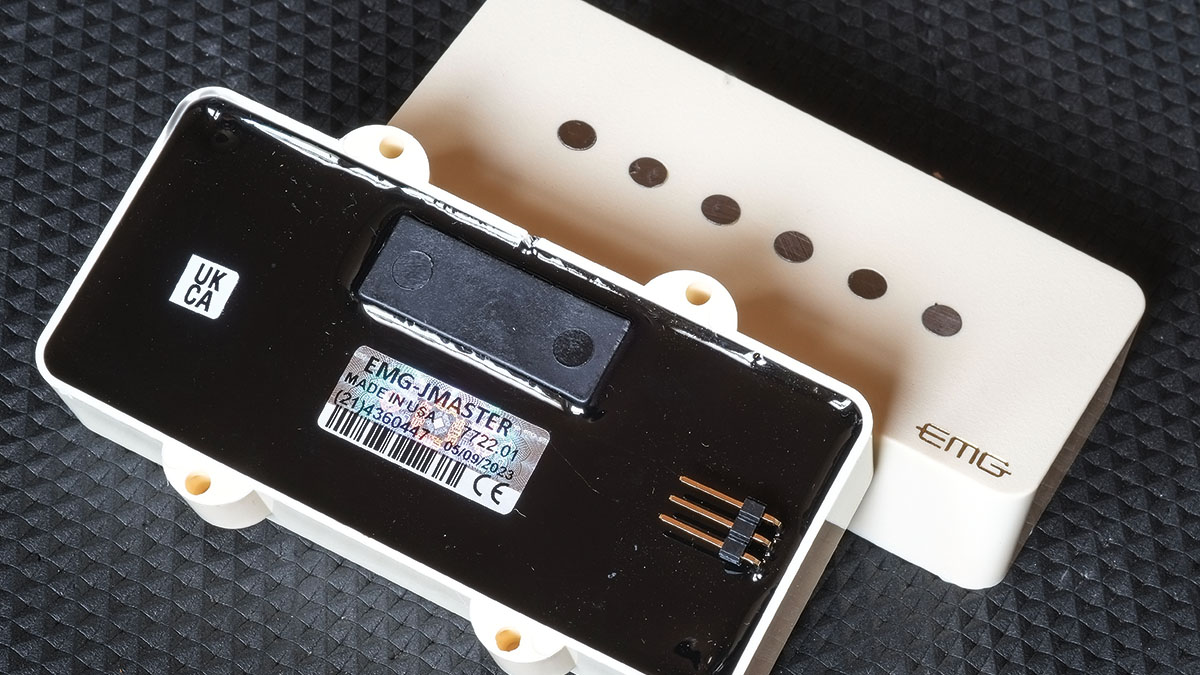
The most vivid example of Fender’s modular approach to guitar making, the Jazzmaster’s separate elements – neck, body, scratchplate (with loaded electronics), pickups, bridge and vibrato – can all be assembled and disassembled with a couple of cross-head screwdrivers.
Yes, in assembly you’d solder a ground wire from a pot casing on the scratchplate to the bridge or vibrato; in disassembly you can just cut this wire close to the pot casing it’s soldered to. For the EMG makeover, you don’t need that ground wire.
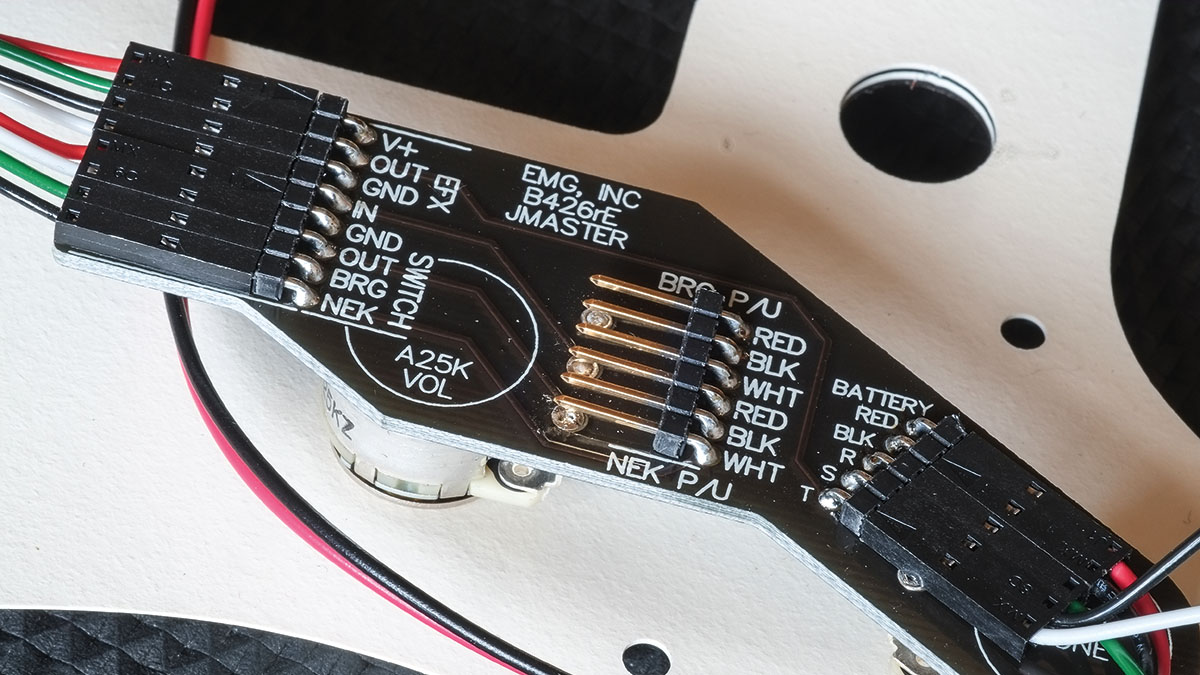
The Pickguard System is typically well packaged, and with the original scratchplate removed it’s a simple job to get it working. You simply plug the supplied push-on leads onto the back of each pickup then to the main control plate and connect a nine-volt block battery to power the active circuitry. That’s it. EMG sensibly suggests you plug in to an amp and test the functions using a small screwdriver to just tap on the pickup poles.
In reality, you’ll need to borrow the rubber cushions under the original pickups and use them here (a bit of a shame EMG didn’t provide a couple of new cushions) and you’ll need to wrap the nine-volt battery in a piece of foam, then find a place for it; I placed it to the side of the small pickup toggle switch. You also need to make sure all the leads fit in the cavities, too, which can be a little fiddly.
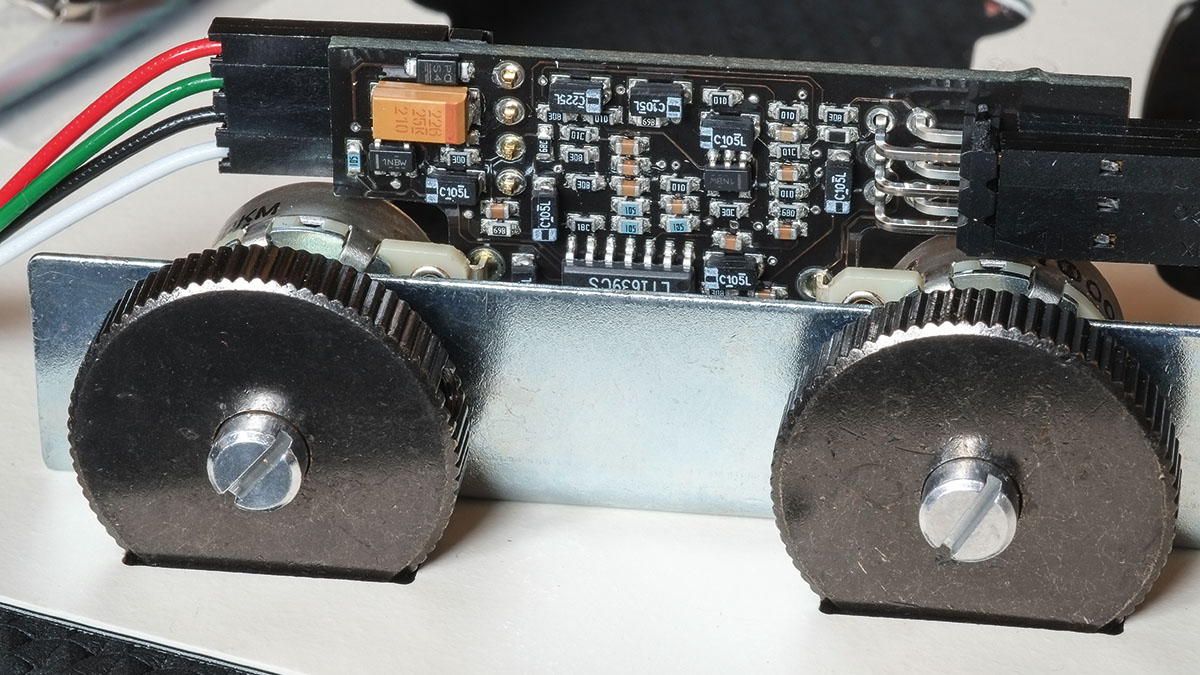
And when rescrewing the scratchplate in place, start with the four screws on the extreme points of the ’plate – don’t screw them fully down – then partially screw in the rest. When everything’s lining up (and it’s worth just plugging in again and checking everything is still working), you can screw down each screw, string up and go.
While it’s a very easy install, the exception is that battery, which in these rechargeable times seems rather old-tech compared with the carefully created circuit boards and solderless connections. EMG quotes a long battery life of 400 hours, but just remember you’ll have to remove the strings and bridge (which, admittedly, just lifts out) and those 13 scratchplate screws for a simple battery replacement.
Sounds
As with any pickup install, you need to set pickup heights, and EMG doesn’t give us any specific guidance there. The pickups, says EMG, are identical (they’re not bridge- or neck-position specific) and use Alnico V rods, so, presumably, they don’t want to be too close to the strings.
As any vintage-style Jazzmaster owner will attest, there’s actually quite a difference in the tonality because of their respective placement: the neck can sound nicely plummy, the bridge is a much brighter, thinner contrast.
Certainly, listening to the Fender Vintera with its original electronics, that was the case, and without a little taming the bridge pickup was excessively bright for my tastes. The four-screw mounting of each pickup lets you tilt the pickups in both axes, but it’s hard to do that in playing position. You’re best off laying the guitar flat, tweaking and then play-testing.
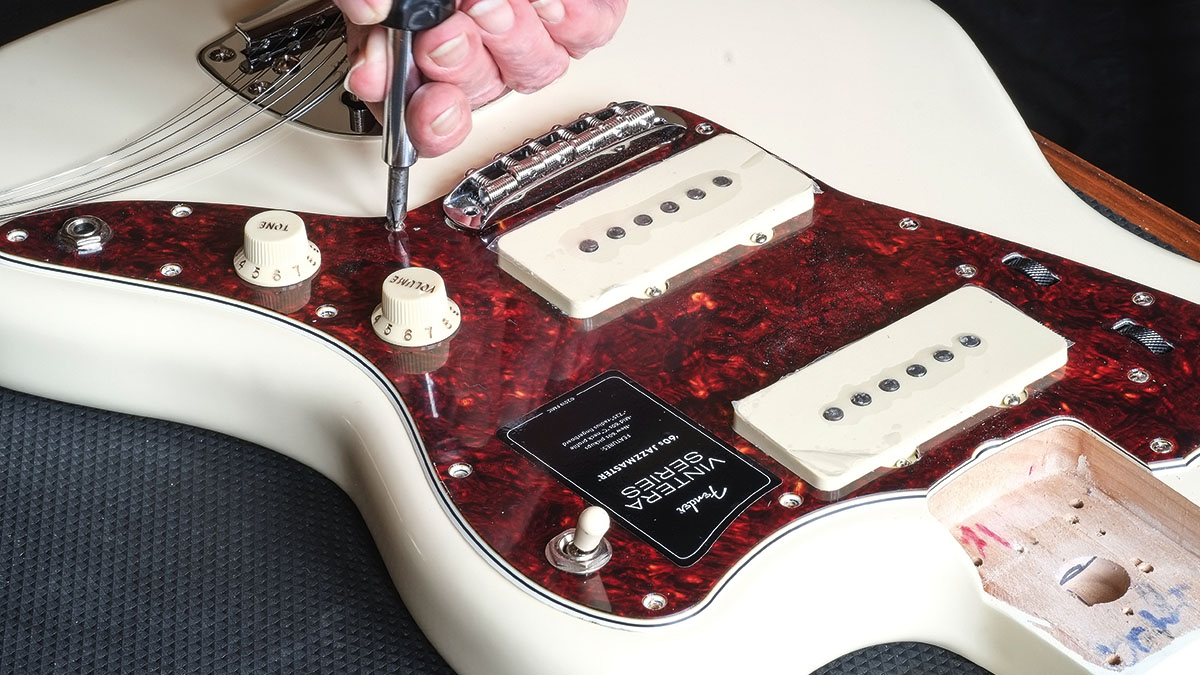
So, although it looks like we have the standard rhythm circuit, we don’t. “Both the EXG and SPC/Boost controls are engaged when turned towards the bridge and bypassed when turned fully toward the neck,” says EMG. “All controls affect the master signal, and are applied to whichever pickups are selected by the three-position toggle.” And with the rhythm circuit switch pushed towards the neck, we voice the mid‑boost SPC; with it pushed away from the neck, that switches from a mid-boost to a clean-boost.
If you’re new to the world of active pickups such as these EMGs, there’s a quite unnerving experience when you plug in: absolute silence. Although Jazzmaster pickups are typically wound so they’re hum-cancelling with both on, the individual units can pick up relatively loud hum, more like a P-90 than a standard single coil. Not here. Until you hit a string, you honestly wonder if your guitar is working. Also, with their buffered output, you’re not troubled by cable capacitance.
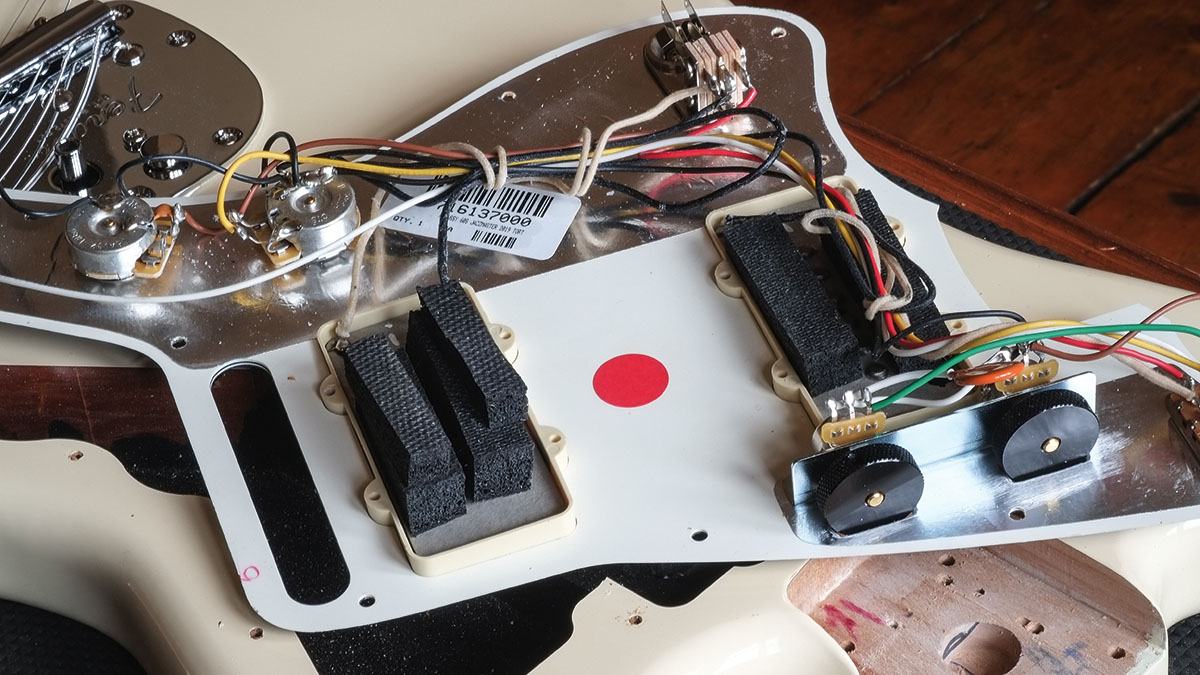
With the rhythm circuit roller controls in their full-on forward bypass positions, the voicing of the JMasters is pretty impressive, capturing more of a vintage voice than a boosted or enhanced sound. That said, the high-end at the bridge is subtly sweetened, although it does sound thinner than the fuller voice we hear from the neck pickup. These two extremes combine beautifully with both pickups on, just like a good Jazzmaster should.
But pulling in the extra tone-shapers, things go up a level or two. The SPC is the perfect partner to fill out the bridge voicing; it’s not overdone but thickens things up in pleasing fashion. The EXG effectively does the opposite by boosting the lows and highs simultaneously, which makes the both-on combination, or indeed the neck pickup, sound magnified and quite magnificent – there’s studio-quality jangle.
The clean boost can’t be voiced with the SPC (it’s either/or), but it not only provides a bit of a solo boost, it works really well just to raise the output level when recording, something that this system excels at.
Final thoughts
A theme we’re seeing more and more of across the pickup industry is diversity. Not too long ago you could buy any pickup you wanted so long as it was in one of the four main footprints: Strat and Tele, humbucker and P-90. That’s certainly not the case now, and these EMG JMaster pickups are the first retrofit active pickups for the Jazzmaster that we’re aware of.
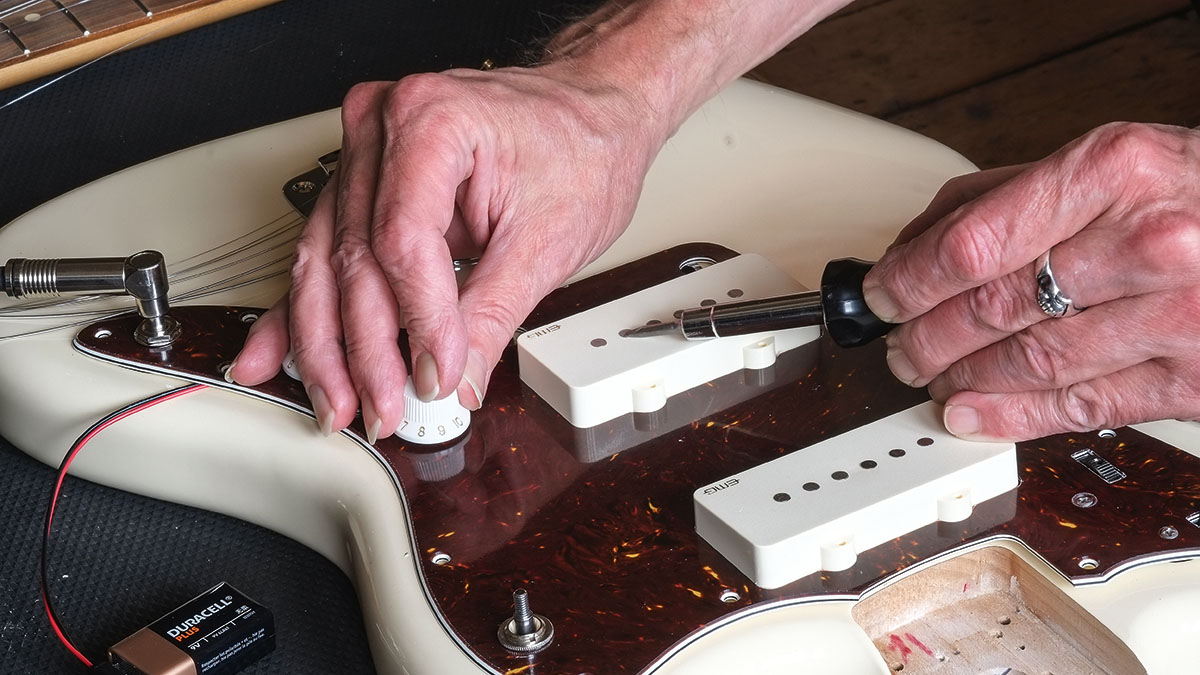
They come with pretty much vintage-style voicing, too, but with all the usual no-noise advantages of active pickups. The tone-shaping extras on the Pickup System version (available separately) work perfectly to enhance the JMasters, subtly or quite considerably. You do need a battery, but that seems a small compromise when the sounds are as impressive, and as practical, as these.
Specs
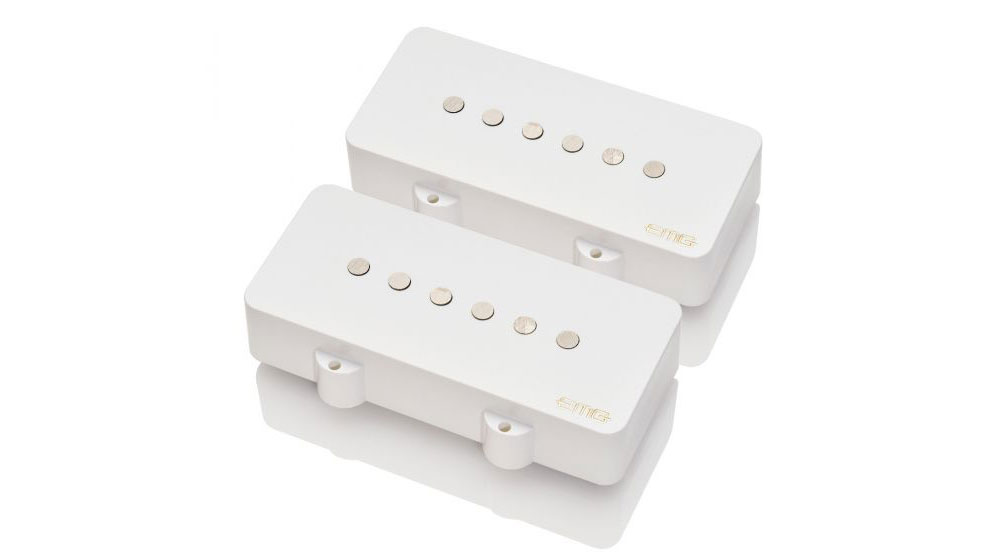
- PRICE: $399/£359 (individual pickups from $229/£199)
- TYPE: Active single-coil pickup and pickguard system
- FEATURES: No solder install
- CONTACT: EMG Pickups

Dave Burrluck is one of the world’s most experienced guitar journalists, who started writing back in the '80s for International Musician and Recording World, co-founded The Guitar Magazine and has been the Gear Reviews Editor of Guitarist magazine for the past two decades. Along the way, Dave has been the sole author of The PRS Guitar Book and The Player's Guide to Guitar Maintenance as well as contributing to numerous other books on the electric guitar. Dave is an active gigging and recording musician and still finds time to make, repair and mod guitars, not least for Guitarist’s The Mod Squad.
“Classic aesthetics with cutting-edge technology”: Are Seymour Duncan's new Jazzmaster Silencers the ultimate Jazzmaster pickups?
“We’re all looking for new inspiration. Some of us have been playing humbuckers for a long, long time”: Are we witnessing a P-90 renaissance? Warren Haynes has his say
